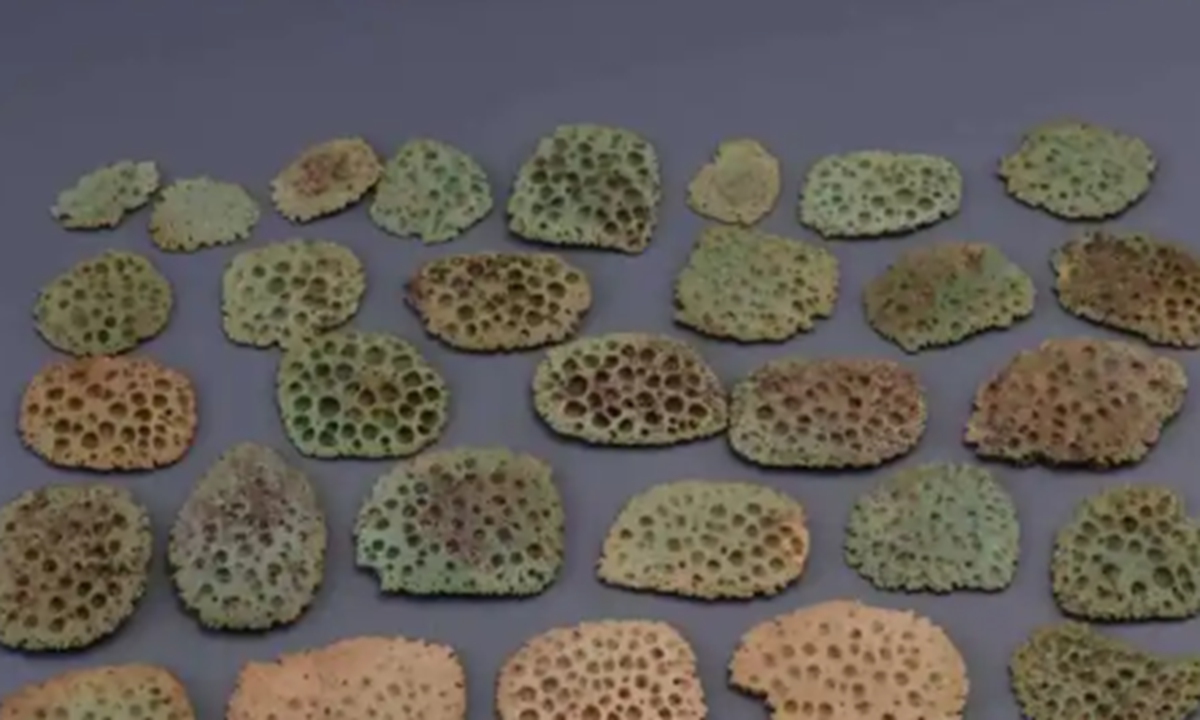Newly uncovered animal remains shed light on Bronze Age trade networks
2025-10-31 16:36:19 , Source : Global Times
Chinese archaeologists have uncovered the remains of six exotic animal species at the Zhaigou site in Yulin, Northwest China's Shaanxi Province, revealing the region's cultural diversity and its possible participation in long-distance trade during the late Shang Dynasty (c. 1600 BC - 1046 BC).
Hu Songmei, an animal archaeology expert and researcher at the Shaanxi Academy of Archaeology, told the Global Times on Thursday that the newly unearthed relics include complete skeletons of horses, dogs, and cattle, as well as bones and bone artifacts from six "foreign" species: mud clams, cowries, Yangtze alligators, flower turtles, horses, and elephants.
"The unique geographic location of Zhaigou determined its cultural diversity," Hu said. "Among the six species, cowries, domestic horses, and mud clams were also found at the northern Shimao site, indicating its close ties with the steppe culture. Meanwhile, the discovery of alligator scales, turtle plastrons, and ivory ornaments, items common in the Yin Ruins of Anyang and the tomb of Fu Hao, suggests the existence of a long-distance exchange network between northern Shaanxi and the Central Plains."
Among the six species, only one mud clam specimen was found, while numerous cowries were unearthed across large, medium, and small tombs. The shells were processed in three distinct ways, with some having small, irregular holes likely used for stringing shells as ornaments, and others' backs shaved flat and polished into coin-like shapes, possibly for use as currency.
At the large noble tombs of the Zhaigou site, archaeologists uncovered a large number of crocodile abdominal plates. These pieces, rectangular or oval in shape, are believed to come from the Yangtze alligator. Notably, no other parts of the alligator skeleton were found, suggesting that these bones were remnants of processed hides rather than local fauna.
"Since the scales are embedded in the alligator's skin and remain after it decays, they were most likely components of leather goods such as drums, pouches, or instrument covers, all imported items acquired through trade," Hu explained.
Horse bones were found in the medium and large tombs of Houliujiata and Wayaogou behind the Zhaigou site, often alongside elaborate burial carriages. The horses, mostly young adult males, were placed near the coffin lids within the burial chambers. Despite the abundance of carriages, the number of accompanying horses was disproportionately small.
"The severe imbalance between carriages and horses suggests that horses were an extremely scarce and valuable resource at the time," Hu said. "The appearance of horses and chariots in large numbers during the late Shang Dynasty indicates frequent long-distance communication and exchange, which underpinned the expansion of the Shang state's territory."
Two finely carved ivory artifacts were also unearthed, along with a fragmentary tusk showing concentric ring patterns characteristic of elephant ivory. Their craftsmanship and texture match other ivory relics found in Central Plains sites, further supporting the hypothesis of trade connections extending across great distances.
Located in the heart of the Loess Plateau in northern Shaanxi, the Zhaigou site spans about 3 million square meters and contains a dense concentration of relics, including large rammed-earth foundations, bronze-casting workshops, residential areas, and cemeteries of varying scale.
Archaeologists regard it as a major political and cultural center of a northern regional state during the late Shang Dynasty. The site's discovery has provided crucial insights into the political geography of the Shang frontier and the interactions between the Central Plains and the peripheral regions. Artifacts such as dual-shaft chariots offer rare material evidence for the development of vehicle technology and early burial customs in ancient China.
"The findings at the Zhaigou site show that Shaanxi's northern highlands were not isolated, but an active hub linking the Eurasian steppe and the Central Plains," Hu said. "It may have been one of the key nodes through which horses, carriages, and other cultural elements spread southward into the heart of the Shang civilization."

Government Organizations



Other Links

Copyright@www.shaanxi.gov.cn All Rights Reserved
Registration Number:陕ICP备10004160号
